One of the purposes of writing a blog is story-telling. Of course I want to show you where to buy lovely things for your homes and give you advice on tips on how to find your style and and things you should know but sometimes it’s important to know the story behind your purchase and today I want to tell you about Joined + Jointed.
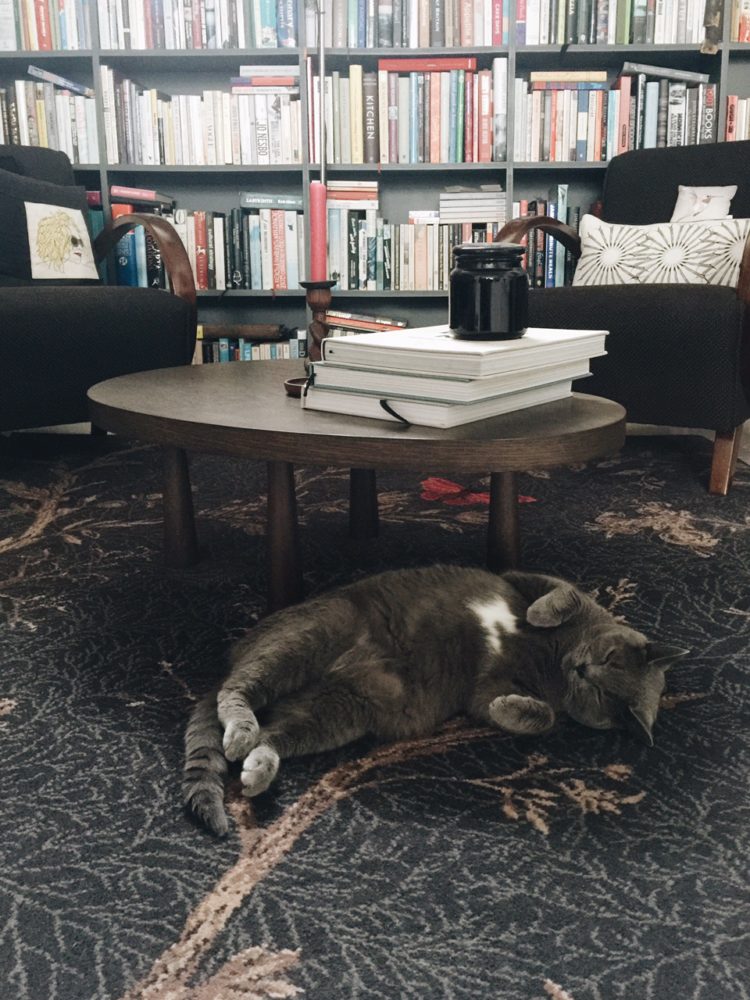
It’s a furniture collective set up by Sam Chan, who owns the high end (bespoke) furniture store on the King’s Road, west London, called Channels. He wanted to bring together a collection of craftsmen who loved wood as much as he does and who also share his love of design and artisanal techniques. But, crucially, he wanted to be able to sell these pieces at accessible prices. And so the collective was formed.
The furniture is simple but hand-crafted. Classic but contemporary and, crucially, useful – it’s not so expensive that you would be afraid to use it. Sam’s sister Marylois Chan, the company’s studio manager, says: “It’s not about being precious but about being used. It’s not mass-produced but properly made by hand and each piece is made to order.”
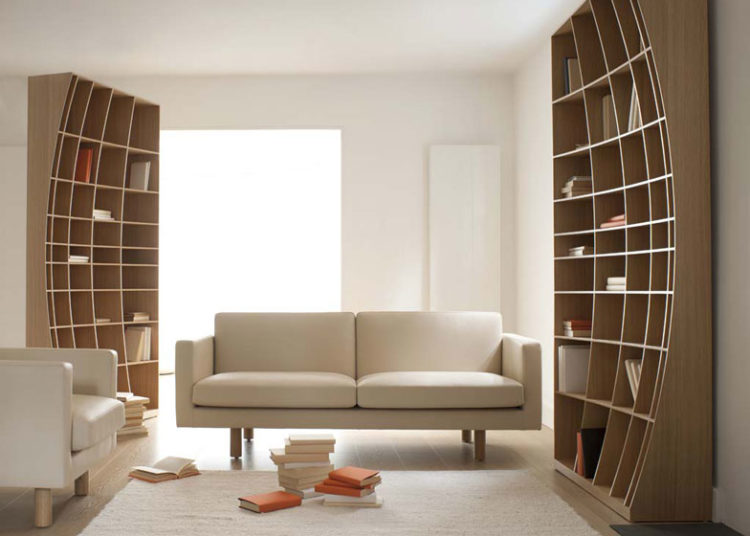
One of the reasons they can keep the prices so competitive is that the Chans own the means of production; they have a workshop in Shropshire and one in China. This means they can keep the costs low. MaryLois is proud to say their prices compete with both John Lewis and made.com. And the table in my library, pictured above, costs £325, which, for a handmade piece, made to order, is not what I was expecting when they contacted me and asked me to tell their story.
The other myth that they wanted to lay to rest is this notion that if it’s made in China then it’s badly made. The Chans workshop was set up by their father who was also a cabinet maker. Chinese craftsmanship is precise and exact and also ancient.
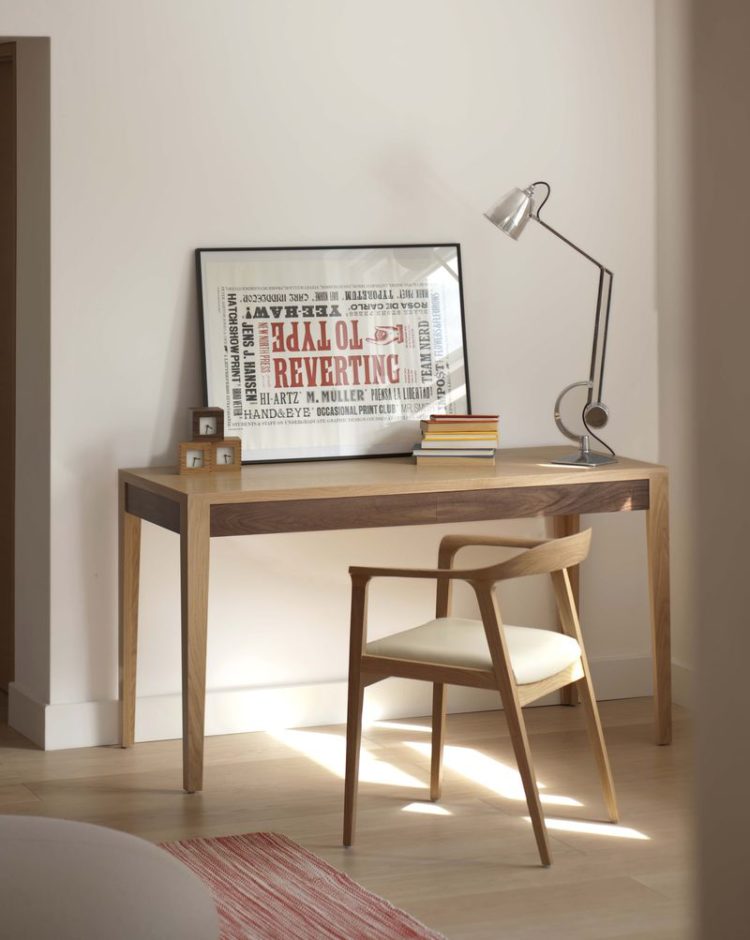
Did you know, for example, that the famous Hans Wegner wishbone chair (coveted by so many of us) was inspired by a portrait of Danish merchants sitting in Ming chairs (and by Ming I mean dynasty). Joined +Jointed have created their own version – the Willow chair by Sean Yoo.
I went to their shop in west London, where Marylois explained how their pieces are carved by machine and all handfinished. The Willow is curved and tactile and so so smooth you just want to stroke it. There are two versions, again made possible by owning the workshop. One has long arms for resting on but probably won’t fit under a table. The other has short arms so that you can pull it right up to a desk and rest your elbows. The second was created as a direct response to customer feedback.
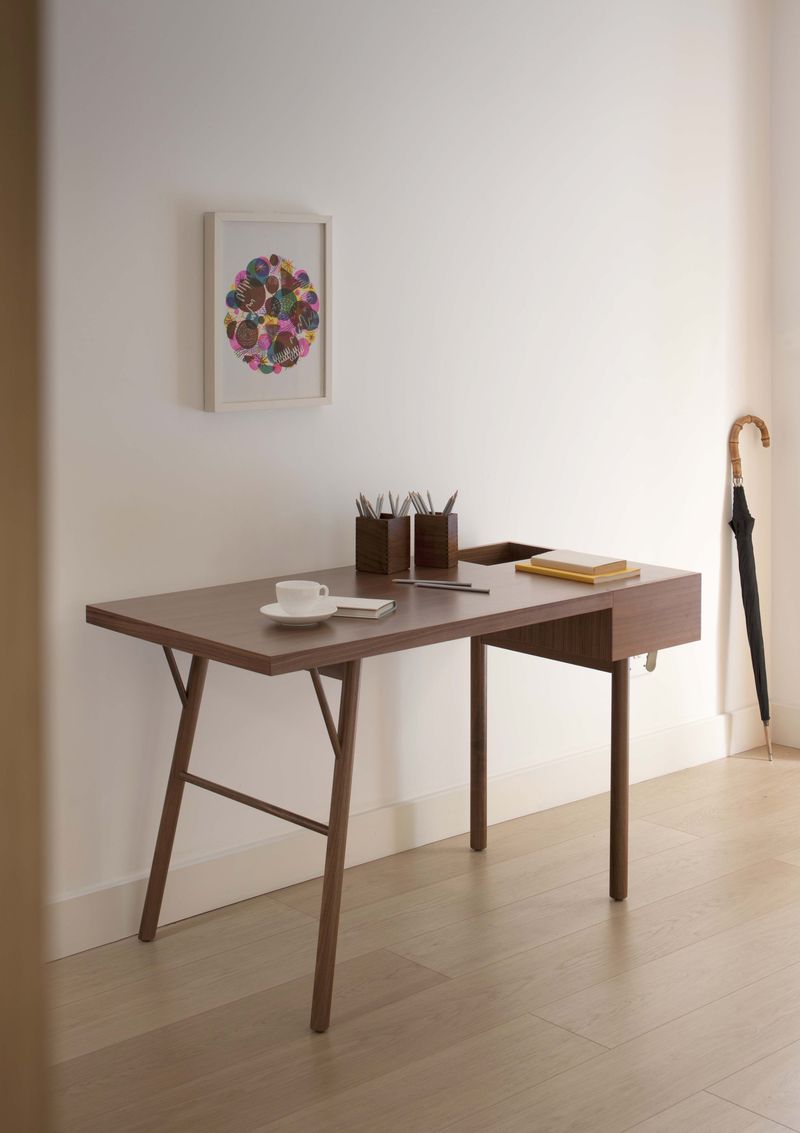
Sam told me about the manufacturing process: “Often when a designer sells a design to a store, the store needs to mass produce it so they might have to change the original concept – to make a shelf thicker or a leg wider and there’s nothing the designer can do because they have sold their design, but the finished product can be a long way from what they envisaged.
“We own the means of production, so one of the first things I have to find out from a designer is what is the most important element. The bit that they won’t change. Often it will be something that makes it much harder to make or will make it more expensive but we will always experiment and work to find a way round that as it’s the key thing for the designer.”
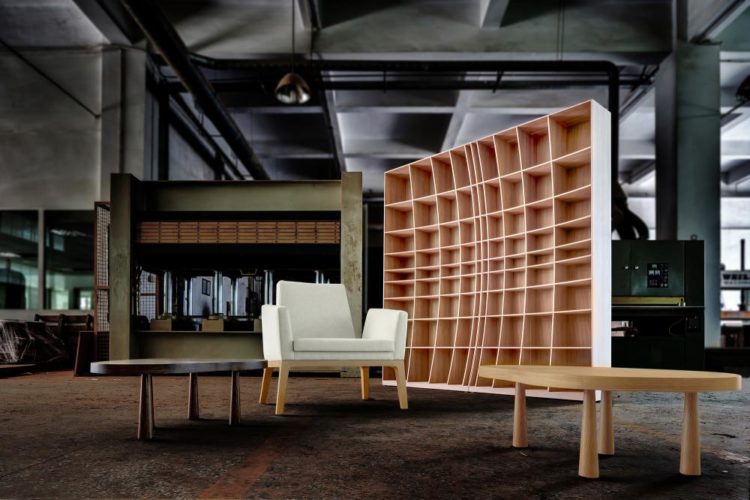
He talks about the Concave bookcase by Simon Pengelly, who has designed for Habitat, among other places. “When Simon brought me this design I immediately asked if we could make the shelf thicker so that it would be easier to make and he said no.
“And he knew it would be hard but it was important to him so we had to work out a way to keep the integrity of the design because that was the point.”
This means that when you buy a piece you are getting what the designer wanted you to have rather than what the manufacturer was able to supply, which is perhaps a small, but important, distinction.
Sam pointed out the leather handles on one desk. “It’s really hard to get hold of these and really hard to fit them but the designer said she wouldn’t compromise on that part so we found a way to make it work.”
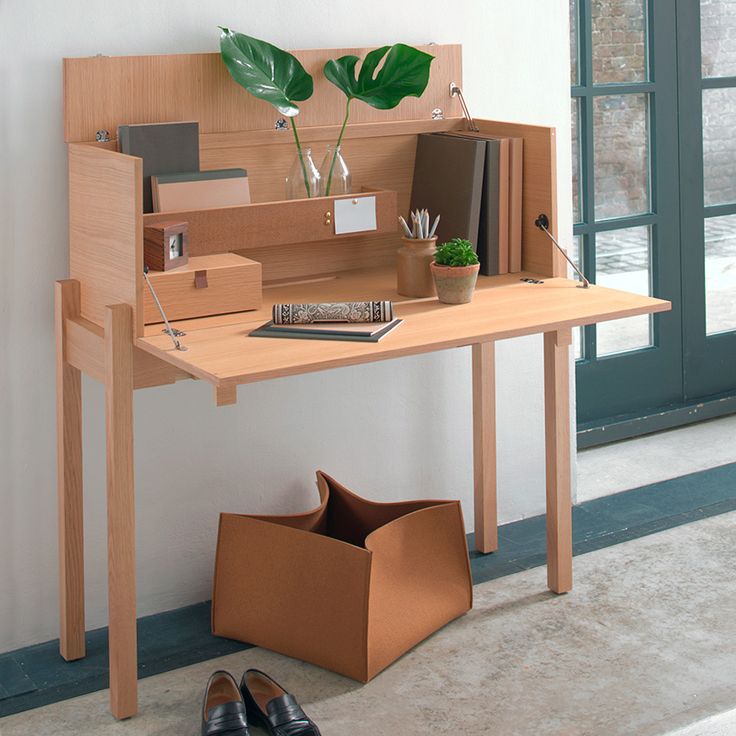
There are around 200 pieces in the collection and they are characterised by their simple shapes and clean lines. It’s either light or dark – oak or walnut – and there is a piece for every room in the house from bookshelves to mirrors, coffee tables and chairs, dining tables and desks.
“We started out with 100 prototypes and most of them are still in production, says Sam.
So involved is Sam in the collective that if their regular delivery driver is unavailable Sam does it himself. He, or one of the team, will bring the piece to your house, help you decide where you want it and help you set it up. Again, a personal touch which you don’t necessarily expect from a store selling at high street prices.
“It’s simple,” he says. “We design it, we make it, we deliver it to you. We do not want a third party to touch it before it arrives in your home.”
There are currently eight designers in the collective, which began three years ago with four. “It’s a small team,” said Sam. “But there is loyality within this core team. We are wood people.”
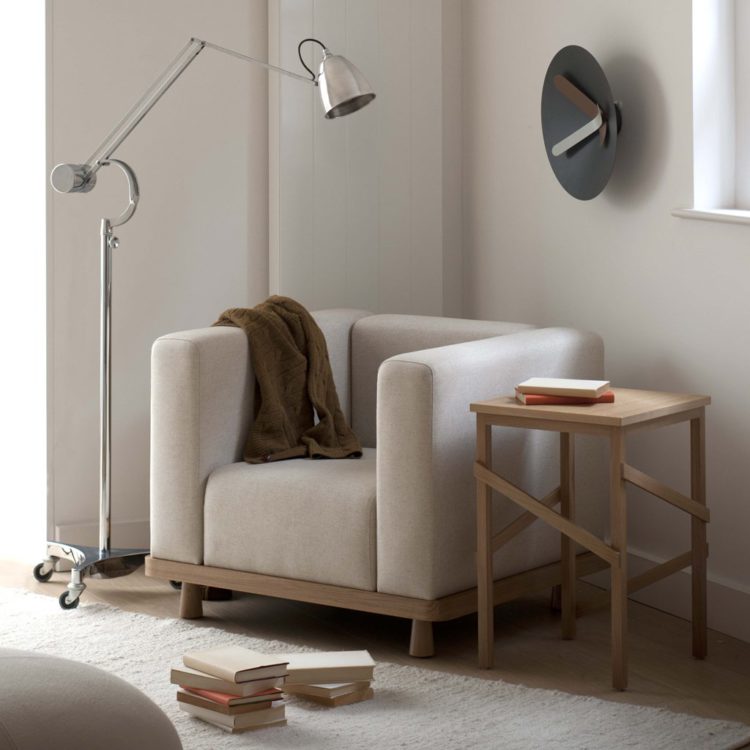
And that just about sums it up. Take a look at the collection and see what you think. You can see from the picture above that we have had a little refresh of the library and I am quite going over to the dark side when it comes to wood what with the chairs and the coffee table.
If you are around for London Design Festival you can find Joined + Jointed at 100% Design at Olympia where they will be launching their new piece, the Bunter, which comprises a mirror, a box for watches, cufflinks and jewellery, a hanger for trousers and jackets and a platform for shoes. Sam says: “I like furniture that inspires affection. The Bunter, with its humanlike form and features, has the potential to do that.”
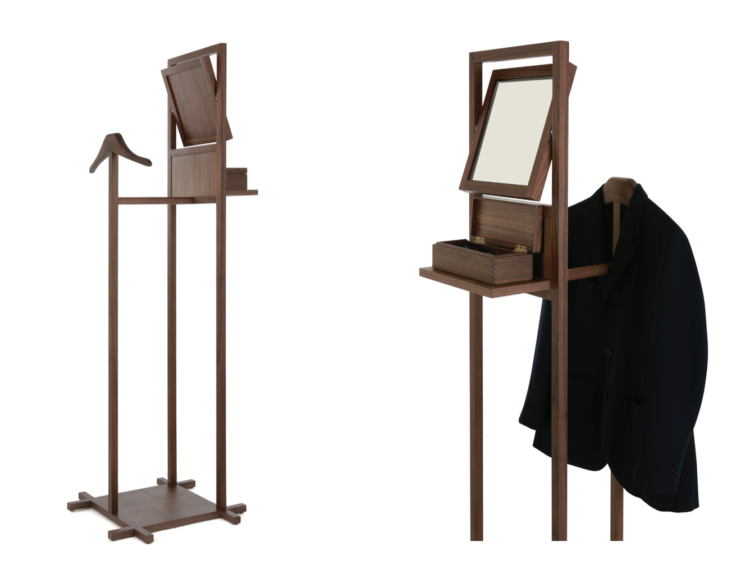





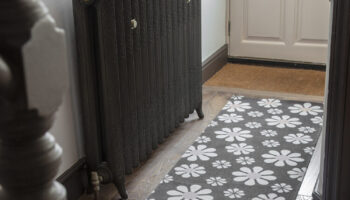
An excellent and interesting piece illustrating how very good design, at reasonable cost, is achievable. But the Concave Bookshelf had an astonishing and disturbing effect on me, looking at the picture made me feel extremely queasy! I wonder if it was the angle of the photograph?
Wow, I really love all of these pieces. Now to see if they ship to the United States…
I didn’t see the valet stand on their website though! I’ve always wanted one of those.
Hi Caroline, the valet stand only launched at the London Design Festival this week. I imagine it will be online in the next week or so.
What a great find, their pieces are gorgeous.
Inspiring story and I would be so thrilled to meet the maker upon a delivery.